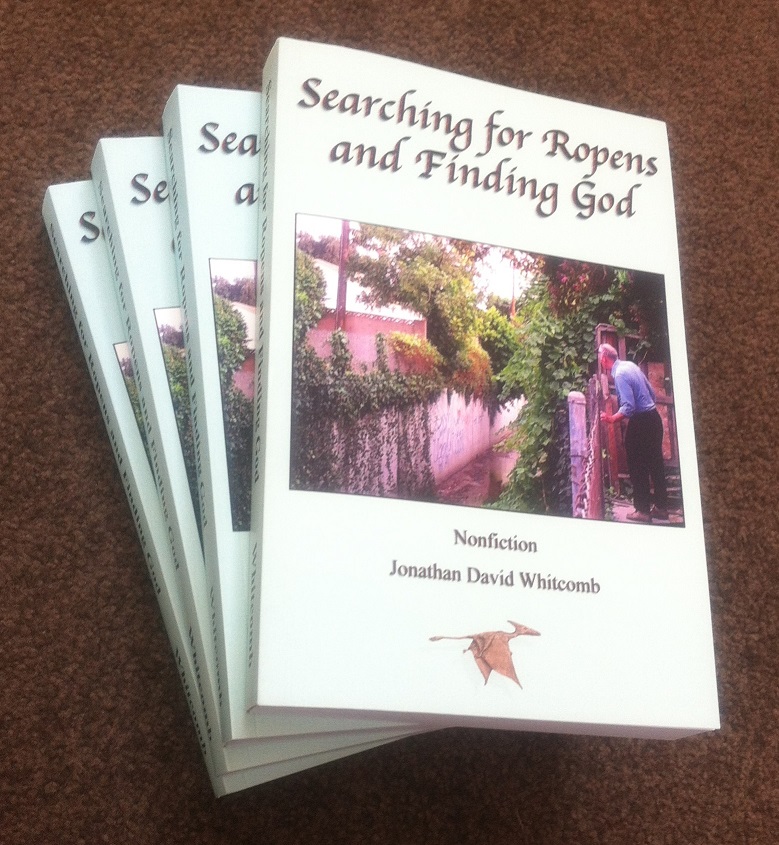Concerning self-correction, also called repentance, C. S. Lewis has said:
We all want progress, but if you’re on the wrong road, progress means doing an about-turn and walking back to the right road; in that case, the man who turns back soonest is the most progressive.
But must a person be mistaken when at least 51% of the public opinion is negative or unconvinced? Of course Lewis recognized how often the majority of people may be mistaken in a given idea, but we sometimes need to be reminded that “strait is the gate, and narrow is the way.”
.
Searching for Ropens and Finding God
From the Introduction in the above Book
Responding to a strange idea by negatively labeling its advocate—that can blind us or at least blur the border between truth and error, even if our concept is better. When in human history has one person always been wrong? And when one pearl is found in the mud of an old oyster bed, expect another.
How to see Objectiveness
The nonfiction pterosaur book Searching for Ropens and Finding God—it can best be judged by either reading it or at least quotations from it, or by considering the word of a trustworthy reader who really knows that book. Beware of the skeptic who judges it to lack an objective view because of the assumed religious beliefs of its author or of the persons mentioned therein.
Is the book objective? Consider the following (condensed) quotations:
“I have not made it into the mountains to confirm the killing of one large prehistoric bat type bird that was shot by police and military . . . when placed in their military pickup, it tilted from the weight of the animal.
“This large, leathery, killed animal was in the same . . . city as the large white bat type bird that was seen by a woman and her husband . . . [That other animal ran] from their home after killing 18 of their chickens. . . .
“I also talked with the brother of [a student from another city] . . . who was returning home late one night and thought he saw a drunk man in the middle of the highway . . . [He soon discovered it] could fly. . . . [he drove his car to escape from] this animal for eleven [kilometers] at very high speeds, crying the whole way, as the bird flew beside him and attempted to get at him thru the windows. [It] seemed to follow the lights of the car. . . .”
. . . Those few sighting reports, mostly indirect, would fail to convince many people that pterosaurs still fly in North America . . . if those reports were alone . . .
. . . [Concerning other, more credible, sightings worldwide] . . . I need to explain the difference between my emotional perspective and that of the eyewitnesses. I rarely feel that I must firmly judge the validity of a particular sighting. By the end of 2012, I had compiled data from 128 sighting reports, and each one I had judged at 51%+ probability for an encounter with a living pterosaur. . . .
. . .An eyewitness . . . can feel torn, dangling between feeling sure it was a living pterosaur and feeling it was something common . . .
. . . I would be happy to help each eyewitness come to stable ground, believing it was a pterosaur or believing it was something else, but I rarely find eyewitnesses, they find me, and when they do they’re usually close to sure it was a pterosaur. In that case, I may explain my general belief in modern pterosaurs and then let the person feel comfortable telling me details about what was seen.
This book about reports of modern living pterosaurs, also called “flying dinosaurs” or “pterodactyls,” should be judged on its own merits, by its own words.
.
###
.

Have dinosaur bones been dated recently? Yes, in two ways: Most of the dating tests were done in recent years, and the results showed that the dinosaur bones tested were alive (parts of living dinosaurs) only tens of thousands of carbon-dated years ago.
.
Living Pterosaur Expert Jonathan Whitcomb Interviewed
They went up to Lake Pung; it was the first time for Gideon . . . within a few minutes (and this was in the middle of the day) . . . this huge creature, they call it ropen, . . . came flying over the lake . . . fairly low altitude over the lake . . . it just scared them terribly . . . all seven of them ran home.
.




